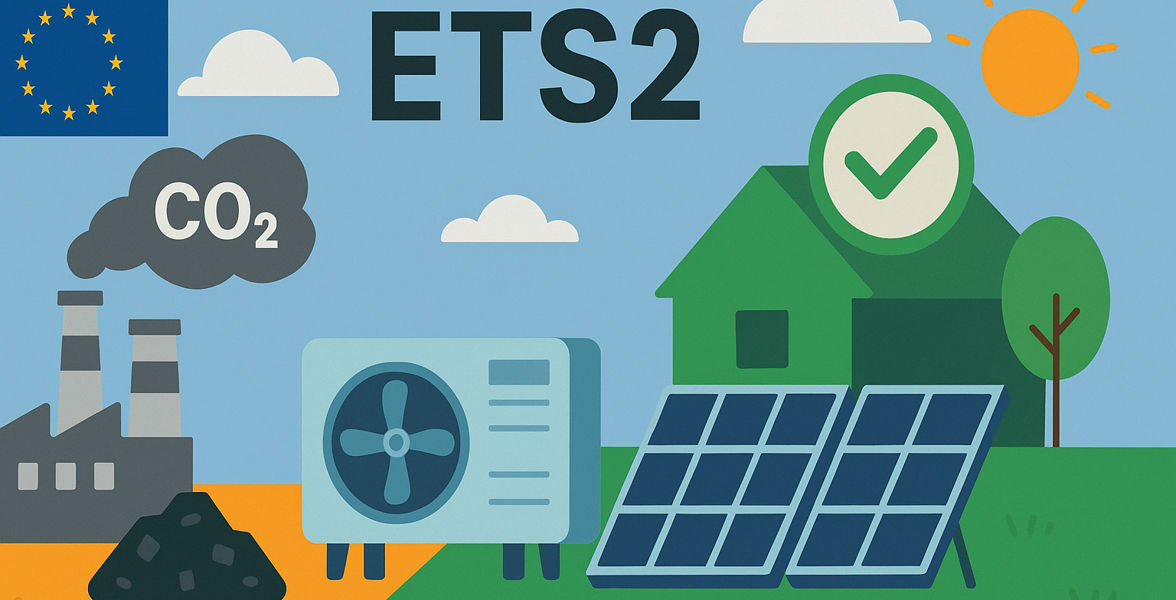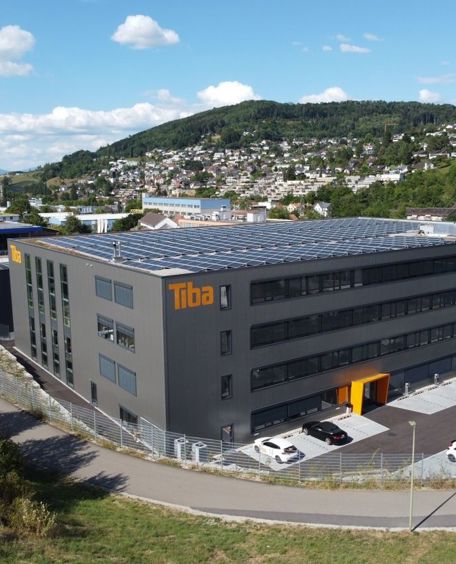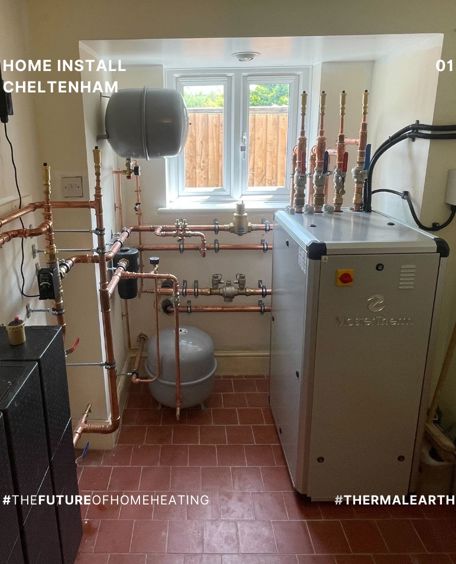The European Union’s new ETS2 regulation aims to replace less environmentally friendly heating systems. Under this system, suppliers of fossil fuels used for heating and transport will be required to purchase CO₂ emission allowances for their customers. This will significantly raise the prices of fossil fuels – including natural gas, coal, and petrol – by tens of percent.

Heat pumps clearly benefit both the environment and household budgets. They use energy from the surrounding air, ground, or water, and can produce three to six kilowatt-hours of heat for every one kilowatt-hour of electricity used.
The return on investment in a heat pump largely depends on the prices of electricity and natural gas. When gas is expensive, a heat pump pays for itself much faster compared to a gas boiler. When gas is cheap, the payback period is longer. “The current drop in gas prices might make heat pumps seem less attractive in the short term, but it's clear this isn’t a sustainable situation. When deciding how to heat a property, we need to think in decades – not just years or months. With ETS2 coming, and fossil fuels being phased out, gas prices will rise – and quite possibly by a lot,” says Jan Potucký, Director of the Czech Heat Pump Association (AVTČ).
What is ETS2?
As part of its “Fit for 55” plan, the European Union aims to become climate neutral. ETS2, or Emissions Trading System II, is designed to encourage both companies and households to switch to cleaner and more efficient forms of heating. The system has already been approved and will take effect across the EU on January 1, 2027.
Under ETS2, gas suppliers must buy emission allowances and include their cost in the price per kilowatt-hour. Three-quarters of the revenue will go to the national budgets, while the remaining quarter will fund the Social Climate Fund. “This fund will help finance green measures and offset energy cost increases for vulnerable groups". adds Jan Potucký.
Gas will become more expensive – but by how much?
It’s currently hard to predict exactly how much gas prices will rise. The EU has introduced a price stability mechanism to prevent runaway costs. If the price of emissions exceeds €45 per tonne of CO₂ (adjusted for inflation to around €57 in 2027), more allowances will be released onto the market to stabilize prices.
Some media and social media posts have claimed that allowance prices have already reached €75 or even €100, predicting gas price increases of up to 50%. So what’s the real picture?
First, the €45 limit is based on 2020 prices. Adjusted for inflation, that’s around €57 in 2027. That could mean an increase in gas prices of around €0.011 per kWh – a rise of 10–20%, depending on the tariff.
David Liška, head of sales at Czech heat pump manufacturer Master Therm
For a typical household using 20,000 kWh of heating per year, this significantly shortens the payback period for a heat pump and almost doubles the annual savings compared to gas heating.
Flexible safeguards and market influence
The €57 threshold is not fixed. Price levels will be monitored every few months. For 2027–2030, there are three “triggers” in place, which track price increases and release more allowances if needed.
In short, regulation will respond to longer-term trends, but the market will ultimately set the price. This is crucial for maintaining the incentive to reduce emissions and prevent speculative trading.
It’s also important to note that the Market Stability Reserve (MSR) has a limited number of allowances – between 20 and 170 million annually – which is relatively small compared to the total cap. So while the reserve can help stabilize prices, it won’t prevent higher trading prices altogether. For 2027, the cap is set at 1.036 billion allowances and will decrease by 56.2 million each year until it eventually reaches zero.
Why are ETS2 prices already being discussed?
Although ETS2 officially starts in 2027, prices are already being set through EUA2 futures – contracts for future purchases. These are offered by international exchanges like ICE (Intercontinental Exchange), and from July also by EEX (European Energy Exchange).
These contracts let distributors lock in prices in advance – typically around €75 to €100 per allowance – helping them plan better and reduce risks. It also allows the market to “test” pricing levels. Regulatory bodies are in place to limit speculative buying, restricting how many futures a single company can purchase.
Heat pumps: A smart way to save
The goal of ETS2 is not to punish fossil fuel use, but to encourage cleaner, more efficient energy choices. The Social Climate Fund will support this transition. In a way, your neighbor who still burns coal will help pay for your home insulation, rooftop solar, and heat pump.
The message is clear: “With ETS2 coming, households have a clear incentive – the sooner you switch to a greener energy source, the sooner you’ll see savings and avoid higher fossil fuel prices. This strong support for green heating is now available to many more people,” says David Liška, head of sales at Master Therm.
Questions and answers
Is ETS2 already approved and binding for EU countries?
Yes. Regulation (EU) 2023/959 was approved under the “Fit for 55” climate package and passed through the EU legislative process. It will apply directly in all member states from January 1, 2027.
Can individual countries change or delay ETS2?
No. EU regulations are directly binding and cannot be altered or delayed by member states.
Could the law still be changed or delayed?
It’s possible, but any change would require a full legislative process. Some countries have pushed for a one-year delay, but key EU members are opposed, and majority support is unlikely. The only built-in safeguard allows for a one-year delay if gas or oil prices spike drastically in 2026.
Can governments compensate households for higher energy prices?
Yes – using money from the Social Climate Fund or national budgets. This can include energy subsidies or grant programs. However, these compensations should be targeted to vulnerable households to maintain the price incentive of ETS2. Broad gas subsidies would mostly benefit suppliers and weaken the system’s effectiveness.



